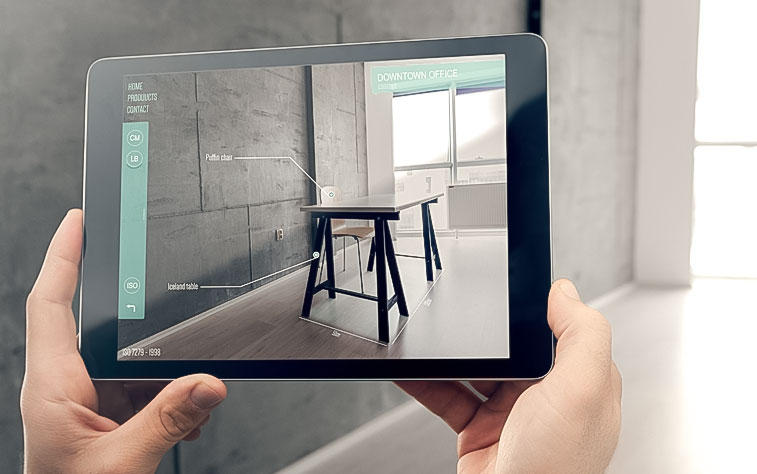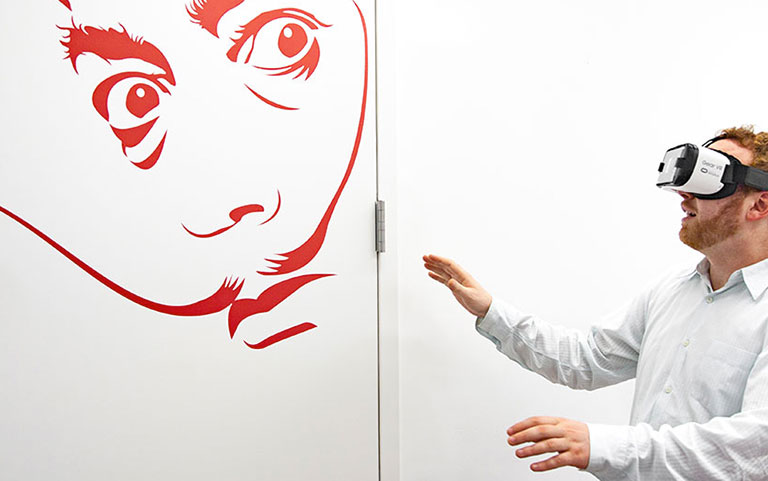Many brands are more focused on winning in this reality than on conquering virtual worlds. But the two goals are more closely related than you might imagine.
New technologies are no longer creeping gradually into the marketing sphere. When innovation proves workable – like voice assistants, chat bots, and augmented and virtual reality – brands are willing to experiment. Should yours be?
It’s hard to commit to what’s next when brands face so many challenges in the here and now. But AR and VR are still in their early stages, and brands have the opportunity to make their mark. Use cases fit naturally – and powerfully – into existing customer journeys. And in an era of distraction, AR and VR experiences are powerfully immersive and engaging.
We’re passionate about exploring what’s next, and we’re always excited to test the limits of augmented reality and virtual reality. We’re imaginative realists, looking for opportunities to make a business case for these new technologies, and we deliver the strategic, creative, and technical expertise to take a vision and transform it into a new and compelling experience.
Elevating Experiences
Across the digital landscape, brands are competing to grab customer attention and hold it long enough to communicate a message. And this is where technologies like AR (adding new layers to the existing environment) and VR (simulating an entirely new reality) make all the difference. Augmented reality and virtual reality – along with their hybrid, mixed reality – offer your audience new experiences that other channels can’t quite match.
That isn’t to say these other channels aren’t incredibly valuable. But AR, VR, or MR are naturally more immersive, and are less familiar to most consumers (and therefore more exciting to them). So naturally, your brand stands to benefit from delivering those kinds of experiences.
Of course, not every brand envisions itself as an AR/VR pioneer. And even those interested in the space will have questions. Do you have a compelling need you can solve with AR, VR, or MR? Will these technologies be meaningful to your market and the delivery of your products or services? Will they scale cost-effectively?
Exploring Use Cases
That said, the beauty of these technologies is they replicate other types of experiences (for example, an in-store experience, or the look and feel of a new purchase in the customer’s home). AR/VR therefore has a powerful ability to remove barriers to conversion in existing customer journeys. This is a big advantage for brands challenged with how to offer ‘real-world’ experiences digitally.
With virtual shopping, showrooms, and demos available, the possibilities for showcasing your products in 360 degrees – and putting these products where customers use them – are limitless. But where does this leave service-oriented brands? With these technologies, you can do everything from training, tours, and entertainment to helping people grasp complex ideas through visualization.
And if you’re just thinking about selling stuff, you’re not thinking big enough. With AR/VR, a brand experience can be an interaction rather than an intrusion, something customers seek out, rather than an interruption. If you can deliver an experience that customers really value, there’s no better opportunity to tell your brand story.

Our AR & VR Approach
Compelling experiences don’t happen by accident. Brands that have successfully entered the space aren’t slapping together VR or AR experiences at random. It takes deep thinking, smart strategies, and sharp execution to make it all materialize. And that’s where we excel.
Our cross-disciplinary team of strategists, designers, copywriters, and developers perform a deep discovery process to explore the value of AR and VR for your brand. Through a clear-cut strategy, we develop both the story you have to tell and the experience your customers are likely to want. We find innovative ways to combine them – whether it’s a relatively simple augmented reality tool or a VR extravaganza. Then our content and design teams get to work giving the experience a human touch – shaping the experience down to the last detail.

